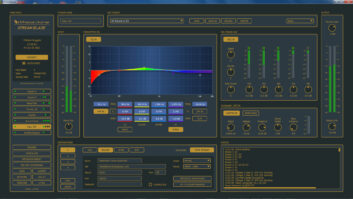SILVER SPRING, Md.
Listeners haven’t yet embraced “94.7 The Globe” as its managers might have hoped.
But though the station is still trying to warm up listeners in Washington, its executives believe they have reason to be optimistic about the future of the environmentally focused station and its format.
Meanwhile they say they are living what they preach by operating a more eco-friendly radio facility.
WTGB(FM), a CBS Radio-owned facility, celebrated the format’s first anniversary in February by reaffirming its mission to help educate listeners about global climate change while reducing its own carbon footprint.
Ratings after one year indicate listening levels have remained virtually unchanged since WTGB adopted the “Go Green With the Globe” brand in February 2007. The station, formerly classic rock WARW(FM), earned a 1.5 share in the Arbitron Fall 2007 report for listeners 12+. That is the exact same performance the station had in the fall of 2006 before it went triple-A.
“Everyone wants to be number one and we’re no different; but more importantly, I think our timing on this was perfect. Our messaging has been very well-timed and executed,” said WTGB Vice President/General Manager Michael Hughes. “We are on the good side of a bell curve and seeing progress in some key demos.”
The Globe staff has added “a lot of depth” to the station environmental efforts since its launch, Hughes said. Examples include helping to spearhead the city’s Green Festival last fall, assisting with the Potomac River Watershed Cleanup Day and striking a strategic alliance with the Chesapeake Bay Foundation.
Being green is “more than just a fad” to WTGB, Hughes said, with the station committed to promoting environmental causes and reducing its own impact on the environment.
‘Energy efficient purchases’
“We are trying to make as much impact locally as we can. It’s a social movement. This is a very personal thing and people want to see the effect of their efforts locally,” Hughes said.
The radio station benefits by being in the nation’s capital, “where policy is shaped and opinions are shaped,” he added.
“The Globe targets a highly influential audience one that advertisers are eager to reach.
There are a number of companies doing advocacy advertising with the station. “These clients have a message to get out and we are a natural outlet for that,” he said.
While its transmitter is yet to be powered only by solar and wind or its staff clothed in bamboo fiber, Hughes says the Globe is making strides to reduce its own carbon footprint.
The facility is using alternative energy credits from Pepco Energy Services to partly power its 50,000-watt transmitter in nearby Bethesda, Md. In addition, the station uses low-voltage studio lighting and has put most office equipment on timers to conserve energy.
Jeff Loughridge, engineering market manager for CBS Radio, said he focuses on making “energy-efficient purchases” when adding new broadcast equipment.
“Technologically we are limited a bit as to how far we can take the green theme. We are fairly boxed in from a transmission standpoint on how much we can cut back our energy consumption.
“One of the more significant changes we’ve implemented is our reliance on filtered air at the transmitter site as opposed to cooled air,” Loughridge said. “We have relied exclusively on large volumes of filtered air since last fall with no ill effects.”
Fans draw air into the transmitter building through filters that cleanse it of dust particulates, leaving cleaner air for the transmitter air intakes.
“Once we hit summer we will need air conditioning again,” he continued.
His limitations include powering an HD-R transmitter, which requires more energy than an analog transmitter, Loughridge said. The Globe converted to HD Radio in 2006 and broadcasts main and secondary IBOC channels. The HD2 channel, called “The Jam,” plays a mix of classic rock and classic hits.
How green is green?
Loughridge said he had long been an advocate of the thinking that “the cooler you keep your building, the happier your tubes are,” but has since re-thought that position.
“As long as the building remains reasonably cool, I don’t want to run the A/C,” he said.
The Globe, which moved to new studios in 2005, has a main studio and several for production and imaging, Loughridge said. All feature SAS Rubicon consoles with BE AudioVault automation systems.
The station is currently working with an outside firm to analyze its carbon footprint, Hughes said. The analysis will measure the station’s power consumption and offer recommendations on which environmentally friendly products to purchase, from buying refurbished office equipment to the paper towels.
“We have been forthright with our audience, telling them that we are not green but going green. Ideally, we will be carbon-neutral someday. We are ready to go to the next level,” Hughes said.
CBS Radio is sharing the Globe’s story with managers of the group’s other 143 stations, Hughes said, but to his knowledge no other stations have picked up the green theme.
Karen Mateo, a spokeswoman for CBS Radio, said, “We don’t have any other stations doing what the Globe is doing. There will be something coming soon from one of our stations in Chicago, but exact plans haven’t been announced.”












